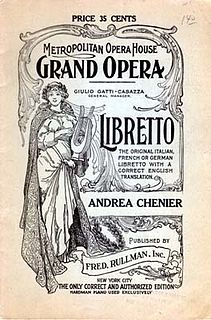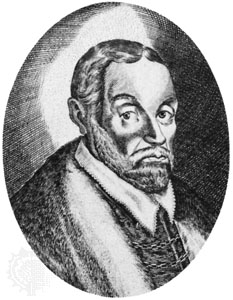
A libretto is the text used in, or intended for, an extended musical work such as an opera, operetta, masque, oratorio, cantata or musical. The term libretto is also sometimes used to refer to the text of major liturgical works, such as the Mass, requiem and sacred cantata, or the story line of a ballet.

Torquato Tasso was an Italian poet of the 16th century, known for his 1591 poem Gerusalemme liberata, in which he depicts a highly imaginative version of the combats between Christians and Muslims at the end of the First Crusade, during the Siege of Jerusalem of 1099.

A pastoral lifestyle is that of shepherds herding livestock around open areas of land according to seasons and the changing availability of water and pasture. It lends its name to a genre of literature, art, and music (pastorale) that depicts such life in an idealized manner, typically for urban audiences. A pastoral is a work of this genre, also known as bucolic, from the Greek βουκολικόν, from βουκόλος, meaning a cowherd.

Pietro Antonio Domenico Trapassi, better known by his pseudonym of Pietro Metastasio, was an Italian poet and librettist, considered the most important writer of opera seria libretti.

Niccolò Jommelli was an Italian composer of the Neapolitan School. Along with other composers mainly in the Holy Roman Empire and France, he was responsible for certain operatic reforms including reducing ornateness of style and the primacy of star singers somewhat.
This article contains information about the literary events and publications of 1573.

Giovanni Battista Guarini was an Italian poet, dramatist, and diplomat.

Opera seria is an Italian musical term which refers to the noble and "serious" style of Italian opera that predominated in Europe from the 1710s to about 1770. The term itself was rarely used at the time and only attained common usage once opera seria was becoming unfashionable and beginning to be viewed as something of a historical genre. The popular rival to opera seria was opera buffa, the 'comic' opera that took its cue from the improvisatory commedia dell'arte.

Pietro Alessandro Guglielmi was an Italian opera composer of the classical period.

Giuseppe Bonno was an Austrian composer of Italian origin.

Il re pastore is an opera, K. 208, written by Wolfgang Amadeus Mozart to an Italian libretto by Metastasio, edited by Giambattista Varesco. It is an opera seria. The opera was first performed on 23 April 1775 in Salzburg in the Rittersaal of the Residenz-Theater in the palace of the Archbishop Count Hieronymus von Colloredo.

Sylvia, originally Sylvia, ou La nymphe de Diane, is a full-length ballet in two or three acts, first choreographed by Louis Mérante to music by Léo Delibes in 1876. Sylvia is a typical classical ballet in many respects, yet it has many interesting features that make it unique. The work is notable for its mythological Arcadian setting, creative choreographies, expansive sets and, above all, its remarkable score.
Father Giambattista Varesco was a chaplain, musician, poet and librettist to Wolfgang Amadeus Mozart. His given name variously appears as Giambattista, Gianbattista, Giovanni Battista and Girolamo Giovanni Battista. He is sometimes referred to with the Italian title Abate or the French Abbé, both used for priests: he was chaplain at the Salzburg court chapel from 1766.
Amyntas is the name of several prominent Greek and Hellenistic men. It later became a stock name for lovelorn shepherds in 16th-century pastoral literature. The name is derived from Greek "amyntor" meaning "defender."
Francesco Zoppis was an Italian composer.
Antonio Maria Mazzoni was an Italian composer.
Il re pastore is an opera by the composer Christoph Willibald Gluck. It takes the form of a dramma per musica in three acts. The Italian-language libretto is by Pietro Metastasio. The opera premiered on 8 December 1756 at the Burgtheater, Vienna.

Erminia, Tancredi, Polidoro e Pastore (R.374.26) or more simply Erminia, is the last of the serenades by Italian composer Alessandro Scarlatti. Conceived for four voices, choir and orchestra, the work was created on the occasion of a wedding at the Palazzo Zevallos Stigliano in Naples on June 13, 1723, two years before the musician's death. The second part has gone astray in time and long considered lost or as an unfinished work. In the 2010s, fragments were found thanks to the Répertoire international des sources musicales.

John Dancer was an Irish dramatist, connected with the Theatre Royal, Dublin. His works consist of several translations from Italian and French, original plays, and some miscellaneous stories and poems.














